
Know Your Chances
This book has been shown in two randomized trials to improve peoples' understanding of risk in the context of health care choices.
| 0 Comments | Evaluated
McMaster Evidence-Based Clinical Practice Workshop Resources – Therapy module
This is the therapy module resources provided to the attendees at the McMaster Evidence-Based Clinical Practice Workshop.
| 0 Comments
McMaster Evidence-Based Clinical Practice Workshop Resources – Systematic review module
The Systematic review module resources provided to the attendees at the McMaster Evidence-Based Clinical Practice Workshop.
| 0 Comments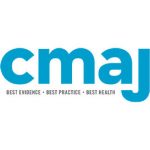
Tips for learners of evidence-based medicine: 1. relative risk reduction, absolute risk reductions and number needed to treat
Relative risk reduction, absolute risk reduction and number needed to treat.
| 0 Comments
Tips for teachers of evidence-based medicine: Relative risk reduction, absolute risk reduction and numbers needed to treat
Tips for teachers of evidence-based medicine: 1. Relative risk reduction, absolute risk reduction and number needed to treat.
| 0 Comments
The 2011 Oxford CEBM Levels of Evidence: Introductory Document
The 2011 Oxford Centre for Evidence-Based Medicine’s Levels of Evidence.
| 0 Comments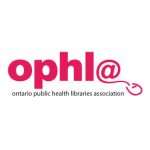
Critical Appraisal of Research Evidence 101
Ontario Public Health Libraries Association guide to critical appraisal of research evidence.
| 0 Comments
Policy: twenty tips for interpreting scientific claims
This list will help non-scientists to interrogate advisers and to grasp the limitations of evidence.
| 0 Comments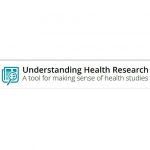
Understanding Health Research: A tool for making sense of health studies
An interactive online tool designed to help anybody to understand scientific health research evidence.
| 0 Comments
Ice bucket challenge “breakthrough”? Experts pour cold water on superficial reporting
Beware claims of treatment breakthrough. They’re probably not.
| 0 Comments
The Slippery Slope: Is a Surrogate Endpoint Evidence of Efficacy?
A discussion of the dangers of relying on surrogate outcome measures.
| 0 Comments
University of Western Australia: Bias Minimisation, randomisation and blinding
University of Western Australia’s explanation of why random allocation to comparison groups and blinding (if possible) are important.
| 0 Comments
Is the therapy clinically useful?
An article from the PEDro database on whether a treatment is useful.
| 0 Comments
Evidence-Based medicine in Pharmacy Practice
An article by Suzanne Albrecht on Evidence-Based Medicine in Pharmacy Practice.
| 0 Comments
Goals and tools in Meta-analysis
Meta-analysis in Michigan State University’s Evidence-Based Medicine Course.
| 0 Comments
Goals and tools in Prognosis evaluation
How to assess prognosis in Michigan State University’s Evidence-Based Medicine Course.
| 0 Comments
Evaluating relevance
How to evaluate relevance of research in Michigan State University’s Evidence-Based Medicine Course.
| 0 Comments
Limitations of current clinical practice
Discussion of the need to recognise the limitations of current clinical practice in Michigan State Univ’s Evidence-Based Medicine Course.
| 0 Comments
Evidence-based medicine
The European Patients’ Academy web-based introductory course on Evidence-Based Medicine.
| 0 Comments
Common pitfalls with studies and things to look out for
‘Ask for Evidence’ introduction to the need for critical appraisal of research studies.
| 0 Comments
Animal Studies
‘Ask for Evidence’ information about the relevance and limitations of animal studies for promoting human health.
| 0 Comments
‘In vitro’ (e.g. test tube) studies
‘Ask for Evidence’ explanation of the term ‘in vitro’ research.
| 0 Comments
Apply the results to your patients
A Duke Univ. tutorial explaining how to address the question: how relevant is the research evidence to the needs of my patient?
| 0 Comments
Delfini: Critical appraisal matters
A 20-minute slide cast discussing how reliable evidence and critical appraisal can help to improve health outcomes.
| 0 Comments
Sunn Skepsis
Denne portalen er ment å gi deg som pasient råd om kvalitetskriterier for helseinformasjon og tilgang til forskningsbasert informasjon.
| 0 Comments
Julia Belluz – Lessons from the trenches of evidence-based health journalism at Vox.com
20-minute talk by Julia Belluz on the need to bring the cultures of health journalism and EBM together.
| 0 Comments

English National Curriculum vs Key Concepts – Key Stage 3
A linked spreadsheet showing how the Key Concepts map to the Science National Curriculum in England at Key Stage 3 (ages 11-14).
| 0 Comments
The surrogate battle – is lower always better?
James McCormick recruits a furious Fuhrer to point out that taking drugs to lower surrogate measures of ill health is a confidence trick.
| 0 Comments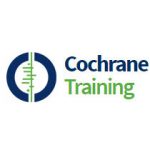
Teach Yourself Cochrane
Tells the story behind Cochrane and the challenges finding good quality evidence to produce reliable systematic reviews.
| 3 Comments
Building evidence into education
Ben Goldacre explains why appropriate infrastructure is need to do clinical trials of sufficient rigour and size to yield reliable results.
| 0 Comments
Anecdotes are great – if they convey data accurately
Ben Goldacre gives examples of how conclusions based on anecdotes and biased research can be damagingly misleading.
| 0 Comments
Unsubstantiated and overstated claims of efficacy
A 32-slide presentation on misleading advertisements and FDA warnings prepared by PharmedOut.
| 0 Comments
Introduction to Evidence-Based Medicine
Bill Caley’s 26 slides with notes used as an ‘Introduction to Evidence-Based Medicine’.
| 0 Comments
Applying evidence to patients
A 27-minute talk on ‘Applying Evidence to Patients’, illustrated by 17 slides, with notes.
| 0 Comments
Defining clinical questions
An 8-min talk on ‘Defining Clinical Questions’ illustrated by 10 slides, with notes.
| 0 Comments
Applying the evidence
Six key slides produced by the University of Western Australia on applying evidence in practice.
| 0 Comments
Appraising the evidence
Six key slides produced by the University of Western Australia to introduce critical appraisal.
| 0 Comments
Not all scientific studies are created equally
David Schwartz dissects two types of studies that scientists use, illuminating why you should always approach claims with a critical eye.
| 1 Comment
Applying the results of trials and systematic reviews to individual patients
Paul Glasziou uses 28 slides to address ‘Applying the results of trials and systematic reviews to individual patients’.
| 0 Comments
Making the most of the evidence in education
A pamphlet to guide people using research evidence when deliberating about educational policies.
| 0 Comments
Tipsheet for reporting on drugs, devices and medical technologies
Questions that will be familiar to reporters covering health and medicine.
| 0 Comments
Tips for understanding Non-inferiority Trials
A non-inferiority experiment endeavours to show that a new intervention is ‘not unacceptably worse’ than the comparison intervention.
| 0 Comments
GenerationR – The importance of involving children and young people in research
3/3, 22-min video at the launch of GenerationR, a network of young people who advise researchers.
| 0 Comments
Generation R – The need to reduce waste in clinical research involving children
1/3, 14-min video at the launch of GenerationR, a network of young people who advise researchers.
| 0 Comments
Preclinical animal studies: bad experiments cost lives
This blog notes that few therapies that treat disease in animals successfully translate into effective treatments for humans.
| 0 Comments
Surrogate Endpoints in EBM: What are the benefits and dangers?
What are surrogate outcomes, their pros and cons, and why you should be cautious in extrapolating from them to clinical decisions.
| 0 Comments
Balancing Benefits and harms
A blog explaining what is meant by ‘benefits’ and ‘harms’ in the context of healthcare interventions, and the importance of balancing them.
| 0 Comments
Surrogate endpoints: pitfalls of easier questions
A blog explaining what surrogate endpoints are and why they should be interpreted cautiously.
| 0 Comments
Making sense of randomized trials
A description of how clinical trials are constructed and analysed to ensure they provide fair comparisons of treatments.
| 0 Comments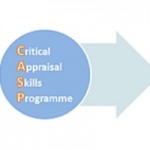
Making sense of results – CASP
This module introduces the key concepts required to make sense of statistical information presented in research papers.
| 0 Comments
Toma de Decisiones Compartidas
¿Por qué nosotros, los pacientes, debemos participar en la toma de decisiones médicas importantes?
| 0 Comments
Using the results of up-to-date systematic reviews of research
Trustworthy evidence from research is necessary, but not sufficient, to improve the quality of health care.
| 0 Comments
Surrogate markers may not tell the whole story
A webpage explaining the limitations of using surrogate outcome markers in clinical research.
| 0 Comments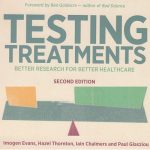
Testing Treatments
Testing Treatments is a book to help the public understand why fair tests of treatments are needed, what they are, and how to use them.
| 0 Comments
Effectiveness Delusions
Cherry picking the results of people in sub-groups can be misleading.
| 0 Comments
Cecil and those pellets again…
If possible, participants in clinical trials should not know which treatment they are receiving.
| 0 Comments
Catch 22 – clinical trials edition
Fair comparisons of treatments in animals or highly selected groups of people may not be relevant.
| 0 Comments
Composite Outcomes
Fair comparisons of treatments should measure important outcomes and avoid dependence on surrogate outcome measures.
| 0 Comments
Biomarkers unlimited
Fair comparisons of treatments should measure important outcomes and avoid dependence on surrogate outcome measures.
| 0 Comments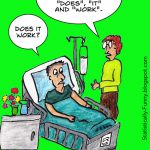
Does it work?
People with vested interests may use misleading statistics to support claims about the efects of new treatments.
| 0 Comments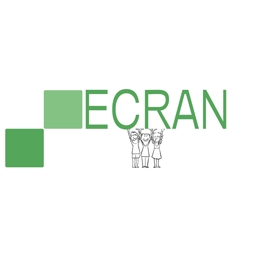
Introduction to clinical trials: lay-friendly video
This lay-friendly video introduction to clinical trials was created by the European Communication on Research Awareness Needs Project.
| 3 Comments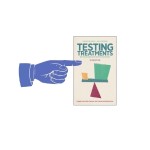
Testing Treatments Audio Book
The Testing Treatments Audiobook enables visitors to the TTi site to select whichever chapters in the book they would like to listen to.
| 0 Comments
Methodology of clinical trials
Eurordis training on the methodology of clinical trials for representatives of patients’ organisations.
| 0 Comments
How to read articles about healthcare
This article 'How to read health news behind the headlines', by Dr Alicia White, explains how to assess health claims in the media.
| 0 Comments
Can measurements show if a treatment works?
An article discussing errors to avoid when testing treatments.
| 0 Comments
Animal and Lab studies
A webpage explaining how results from animal studies may not be transferable to humans.
| 0 Comments
Be careful with composites
Kevin Lomangino's article discusses the limitations of composite outcomes and surrogate markers.
| 0 Comments
Disease outcomes vs. patient-relevant outcomes
An e-Learning module consisting of 3 slides and 2-min commentary on why it is important to treat patients, not numbers from tests.
| 0 Comments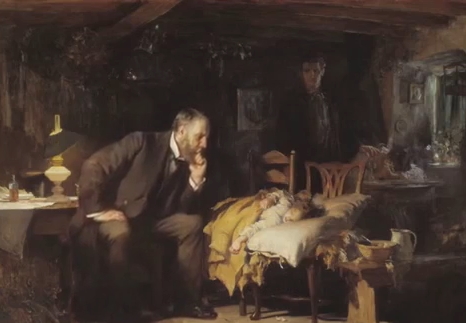
Viva la Evidence!
A brilliant song and video by James McCormack explaining the basics of evidence-based medicine.
| 0 Comments
Evidence Based Medicine Matters: Examples of where EBM has benefitted patients
Booklet containing 15 examples submitted by Royal Colleges where Evidence-Based Medicine has benefited clinical practice.
| 0 Comments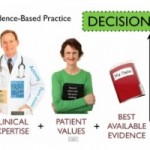
Some Studies That I Like to Quote
This short music video encourages health professionals to use evidence to help reach treatment decisions in partnership with patients.
| 0 Comments
Shared Decision-Making
This resource from the Health Foundation shows how shared decision-making can be made to work in a typical consultation.
| 0 Comments
On taking a good look at ourselves
Iain Chalmers talks about failings in scientific research that lead to avoidable harm to patients and waste of resources.
| 1 Comment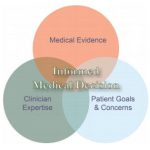
Communicating with patients on evidence
This discussion paper from the US Institute of Medicine provides guidance on communicating evidence to patients.
| 0 Comments
Involving citizens to improve healthcare
‘The confluence of interest between advocacy groups, those who sell treatments, and those who prescribe them makes for a potent […]
| 0 Comments
Lay people help to rethink AIDS
‘Credibility struggles in the AIDS arena have been multilateral: they have involved an unusually wide range of players. And the […]
| 0 Comments
A key partnership
‘People-focused research in the NHS simply cannot be delivered without the involvement of patients and the public. No matter how […]
| 0 Comments
Patients’ choice: David and Goliath
‘Who has the power to see that research questions actually address the greatest needs of patients in all their misery […]
| 0 Comments
Psoriasis patients poorly served by research
‘Few trials involved comparison of different options or looked at long-term management. The duration of studies is unconvincingly brief in […]
| 0 Comments
Who decides what gets studied?
Clearly this situation is unsatisfactory, so how has it come about? One reason is that what gets studied by researchers […]
| 2 Comments
Questions that are important for patients
Researchers in Bristol decided to pose a fundamental question: ‘To what extent are questions of importance to patients with osteoarthritis […]
| 0 Comments
Stroke
Another example of unnecessary research, yet again because the results of preceding studies had not been gathered together and analyzed, […]
| 2 Comments
Epidural analgesia for women in labour
The importance of assessing outcomes that matter to patients is clearly illustrated – in a very negative fashion – by […]
| 0 Comments
What research regulation should do
‘If ethicists and others want something to criticise in clinical trials, they should look at scientifically inadequate work, reinvention of […]
| 0 Comments
A commonsense approach to informed consent in good medical practice
‘What is missing in the debate surrounding informed consent is the true nature of patient understanding, what information patients want […]
| 0 Comments
Rethinking informed consent
‘[Some] have come to suspect that informed consent is not fundamental to good biomedical practice, and . . . attempts […]
| 0 Comments
What regulatory systems do not do
Although regulatory systems for research impose onerous requirements on researchers before studies start, there are many things they conspicuously fail […]
| 2 Comments
Information and consent
Requirements relating to provision of information and consent for studies are one of the ways in which the regulatory system […]
| 0 Comments
What does “statistically significant” mean?
‘To be honest, it’s a tricky idea. It can tell us if the difference between a drug and a placebo […]
| 0 Comments
What does a “significant difference” between treatments mean?
Well, this is a trick question, because ‘significant difference’ can have several meanings. First, it can mean a difference that […]
| 2 Comments
Addressing uncertainties about the effects of treatments
Where do we go from here? Clinicians need to be able to draw on resources that provide the best current […]
| 0 Comments
When practitioners disagree
In this sub-section Introduction (this page) Caffeine for breathing problems in premature babies Antibiotics in pre-term labour Breast cancer Introduction […]
| 2 Comments
Herceptin
Commercial companies are not alone in trumpeting the advantages of new treatments while down-playing drawbacks. Professional hype and enthusiastic media […]
| 1 CommentNo Resources Found
Try clearing your filters or selecting different ones.
